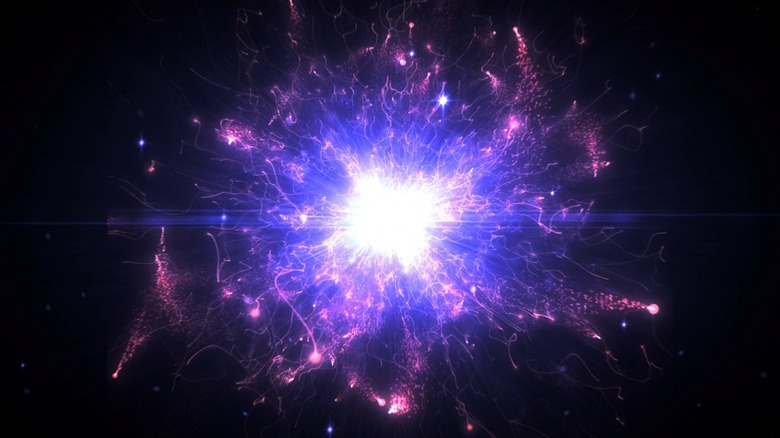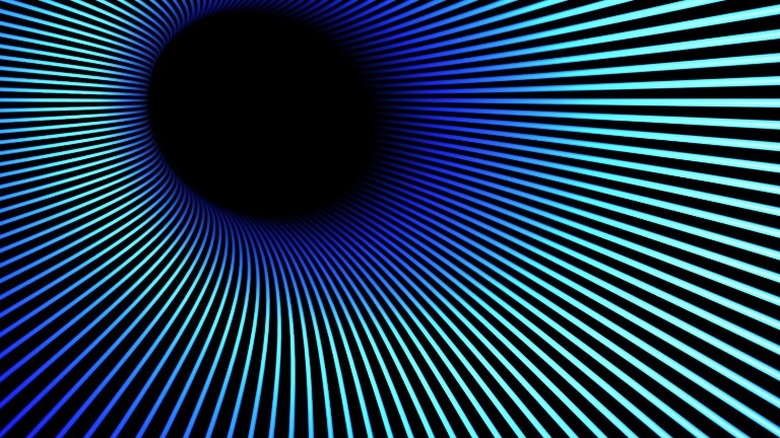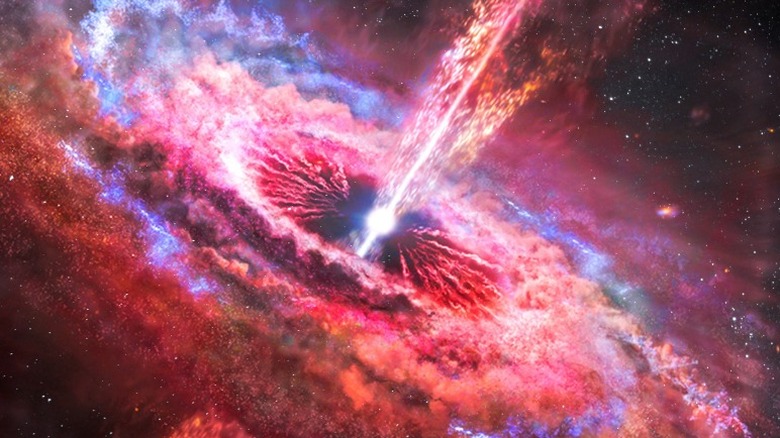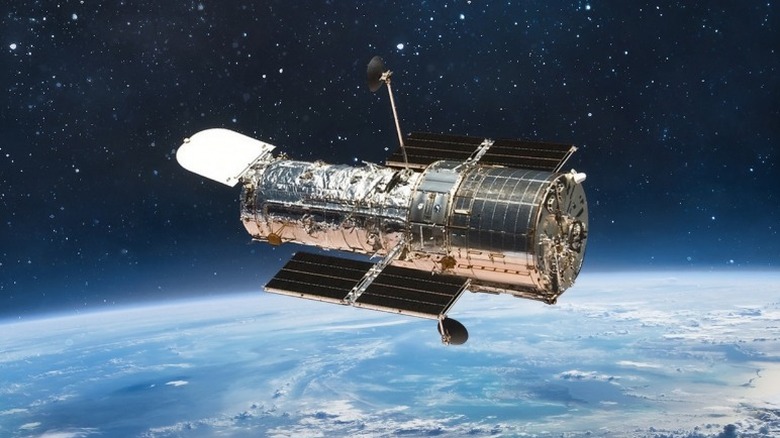Do White Holes Exist In Space?
You don't have to be a science fiction enthusiast or have a degree in astrophysics to have heard of black holes. Over the past several decades, these objects have been observed all over our universe, captivating the imaginations of scientists and laymen alike. Black holes and their theoretical counterparts, white holes, have been speculated to be everything from a way to travel to remote parts of the universe to the key to moving through time.
According to Astronomy magazine, the first black hole ever observed by astronomers was first spotted all the way back in 1964 in the form of an X-ray-emitting space object dubbed Cygnus X-1. Because a black hole had been theorized but never proven to exist before this point, it was decades before Cygnus X-1 could be confirmed to be one. A decade after its initial discovery, Cygnus X-1 became part of a famous wager between Kip Thorne and Stephen Hawking, who settled said bet in 1990 as the first major confirmation of its status as a black hole was published.
In 2011 Cygnus X-1's official black hole status was confirmed by multiple scientific studies, which highlights the fact that the other side of the proverbial coin hasn't yet been proven. If we have proof of one side of a hole in space, why don't we have proof of the other?
Black hole math led to the study of white holes
In 1915, Albert Einstein published his theory of gravity. Not long after, physicist Karl Schwarzschild delivered one solution to Einstein's theory, effectively creating a black hole. Australian physicist Ludwig Flamm researched Schwarzchild's solution and realized a second solution to Einstein's theory was possible, creating what would eventually be called a white hole.
Ludwig Flamm expanded on his investigation, theorizing a connection between the two solutions to Einstein's theory. Flamm suggested that a spacetime conduit could connect one side of this hole to the other. In 1935, Einstein and Nathan Rosen also came up with a (largely similar) theory for a conduit that'd eventually be called an Einstein-Rosen bridge, and physicist John Wheeler would later call a wormhole.
While black holes suck in light, white holes gush light outward. Objects cannot avoid being pulled to the center of a black hole, but would not be able to reach the center of a white hole no matter how hard they tried. Would that the two were connected, we'd have ourselves a doorway — one way in, one way out.
The creation of a black hole in brief
A black hole has the potential to form when a massive star dies. As soon as the star spends all of its thermonuclear fuel in its core, the core destabilizes. This causes the core to rapidly collapse inside itself and blast its outer parts into space. The collapsed core has the potential to form a black hole: an object with infinite density and a gravitational force so strong that not even light can escape it (via Britannica).
Unlike black holes, white holes don't have a gravitational pull or impact on surrounding stellar objects that can be observed through a telescope. At the moment, white holes are theoretical mathematical concepts that astrophysicists use to help further study black holes in space.
To study a black hole, scientists mathematically explore the area that surrounds it in space. When they do these mathematical calculations without factoring in the mass that exists inside of the black hole's event horizon, they "create" a theoretical white hole.
What would a white hole look like?
According to Space, a white hole observed by a nearby spacecraft might look like a black hole for the most part, including evidence of rotation and a ring of gasses and dust around its event horizon. The difference between the two would only be made clear when the white hole began to belch out light, rather than pull all surrounding light inward.
Physicists describe a white hole as a black hole running backward through time. They postulate that the objects inside a white hole are not bound there, and would be free to travel outward and away. But since nothing can enter the white hole, the remaining universe would have no impact on its source.
Because of the singular nature of the white hole, John Staughton of Science ABC suggests that "some element of the infinite past could have an impact on our present, but we could have no effect on it, no matter how hard we tried." At the moment, researchers haven't publicly disclosed proof that a white hole exists in space — not beyond theoretical science, anyway. They may very well exist, but for now, they're only really an idea.



